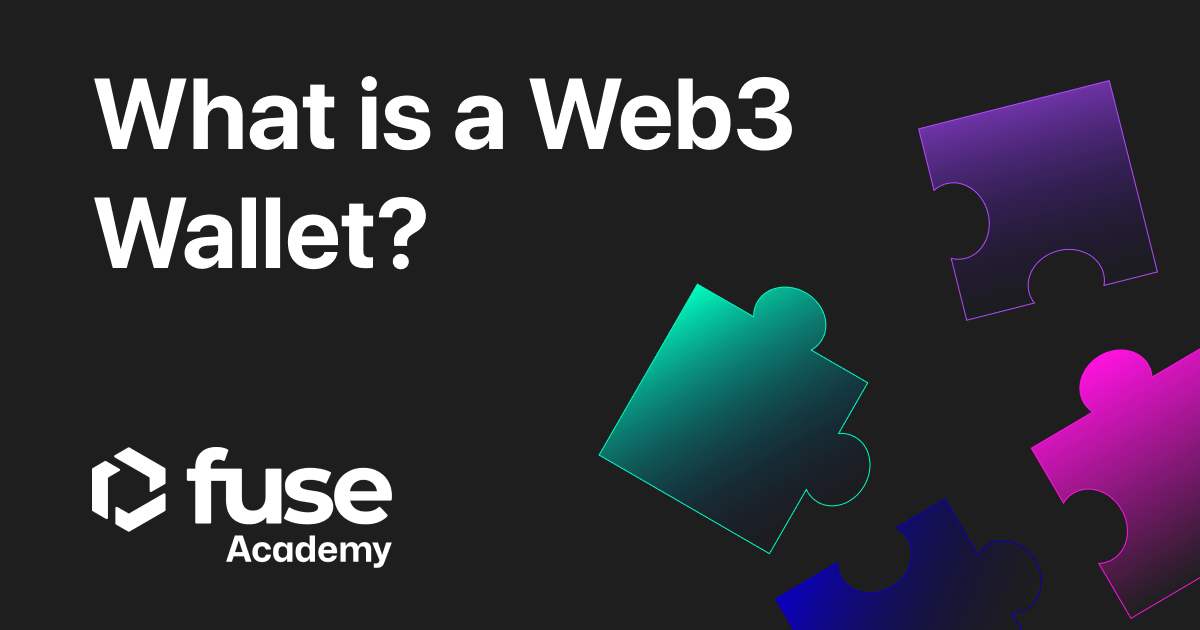A Web3 wallet is a digital wallet that allows users to store, send, and receive digital assets such as cryptocurrencies and NFTs. These wallets are essential when interacting with Web3 and blockchain because they provide users with access to decentralized finance (DeFi) apps and allow them to explore the full potential of the decentralized web.
Historically, the mass adoption of any new or innovative technology requires scalable and user-friendly identity systems. Unfortunately, most Web3 wallets today suffer from the same fundamental issues hurting Web3 and blockchain adoption: complicated setup, fragmented wallets for various chains, poor seed phrase security, and a cumbersome user journey.
Decentralized identity plays a crucial role in Web3 because users can attach their identity to a wallet and then to decentralized applications (dApps) and use them without creating new accounts or providing personal information.
Web3 is a term believed to have been coined by the founder of Polkadot, Gavin Wood, in early 2016. More importantly, a Web3 wallet can go by several names, such as crypto, blockchain, or DeFi wallet. Technically speaking, there is a nuance between them, but for argument’s sake, when you hear these terms, you can be 99% sure it refers to a Web3 wallet.
In this article, we will dive into some of the most pressing questions surrounding Web3 wallets, show you how to set one up, stay safe, and finally, show developers how to integrate the Fuse Web3 wallet directly into their existing applications and start harnessing Web3 payments.
- What is a Web3 wallet?
- What are the best Web3 wallets?
- How can I create a Web3 wallet?
- How to Add Fuse to Your Web3 Wallet
- How do I keep my Web3 wallet safe?
- Web3 wallets in apps
- What is a Web3 wallet SDK?

What is a Web3 Wallet?
A Web3 wallet is a digital wallet that allows you to store digital assets such as cryptocurrencies and NFTs. In addition, it lets you interact with decentralized applications (dApps) on various blockchains.
In addition to storing digital assets, Web3 wallets can serve as a gateway to bankless financial services, create on-chain identity, collaborate with communities, and provide substantially more use cases beyond the extent of the conventional wallets we use today.
What are the best Web3 wallets?
Several wallets have emerged to meet the growing demand for decentralized financial services and seamless interaction with the Ethereum Virtual Machine (EVM)-compatible blockchains, like Fuse. Among these wallets, MetaMask is a popular choice for many cryptocurrency enthusiasts. This is because it provides a non-custodial solution, enabling users to interact with dApps on various EVM-compatible blockchains like Ethereum, Fuse, Polygon, Optimism, Avalanche, and more.
These wallets collectively offer a wide array of features and options to cater to the diverse needs of blockchain enthusiasts, empowering them to navigate the decentralized landscape with confidence and ease.
- MetaMask: A popular non-custodial wallet that allows users to interact with dApps on EVM-compatible blockchains (e.g., Fuse, Ethereum, Polygon, Optimism, Avalanche, etc.)
- Trust wallet: A mobile wallet that supports multiple cryptocurrencies and allows users to interact with dApps on EVM-compatible blockchains.
- Argent: A mobile wallet that allows users to buy, earn, stake, or trade different Ethereum assets on Layer-2.
- Rainbow: A mobile wallet that supports multiple cryptocurrencies and allows users to interact with dApps on EVM-compatible blockchains
- Zerion: A mobile wallet that allows users to manage their DeFi portfolio and track their investments
How can I create a Web3 wallet?
Now that you know more about some of the best Web3 wallets. Here are some general steps to create one:
- Choose a wallet provider: You can use one of the many available wallet providers, such as MetaMask, Trust Wallet, or Coinbase Wallet.
- Download the wallet app: Download the wallet app from your app store.
- Create an account: Follow the instructions to create an account.
- Backup your seed phrase: Most wallets will ask you to back up your seed phrase. This list of words can be used to recover your wallet if you lose access to it.
- Start using your wallet: Once you have created a wallet and backed up your seed phrase, you can use it to send and receive cryptocurrencies and connect to various dApps.
How to Add Fuse to Your Web3 Wallet
FuseNetwork offers a fast, decentralized, low-cost alternative to existing digital payment rails, primarily targeted at businesses that want to embrace Web3 payments. The FUSE token is the currency of the network and the decentralized applications it supports.
There are a few simple steps to add Fuse Network to your MetaMask wallet, starting with installing MetaMask, and creating an account. If you already have a MetaMask account, follow the instructions below to add Fuse Network.
How do I keep my wallet safe?
Making your Web3 wallet safe starts with reading instructions and making a hard copy of your seed phrase. Due to the decentralized nature of crypto, it might be impossible to retrieve your assets when you make mistakes. The first thing to do is secure your browser using a good web browser. Some other pointers include:
- Use a VPN
- Enable Two-Factor Authentication
- Avoid Phishing attacks and scan malicious emails
- Not Your Keys, Not Your Crypto
- Connect Your Wallet Carefully
- Read Transaction Messages
- Only Risk What You Can Lose
Web3 Wallet in Apps
Developers can integrate Web3 Wallet functionality into their existing iPhone and Android applications using SDKs and other tooling to start accepting crypto payments and transactions.
For example, the Voltage Finance DeFi VOLT APP has an iOS and Android app with a built-in Web3 wallet. This way, users can connect to the application natively and store, send, and receive crypto assets and, in some cases, NFTs.
Better still, improvements in the UX of integrated wallets mean they can be non-custodial and provide convenient social logins and cloud recovery. Something that, if you’ve been using wallets such as Metamask for some time, will sound great.
At Fuse, we are committed to embracing Web3 payment services and helping our clients make the most of this game-changing technology. With our expertise in blockchain and digital payments, we can help businesses navigate the complexities of Web3 payment services and unlock the full potential of this exciting new payment ecosystem.
Using the Fuse Wallet SDK, more profound ways exist to integrate cryptocurrency payments into existing applications and bring a wealth of loyalty and financial services.
What is a wallet SDK?
An SDK stands for Software Development Kit. It is a set of tools provided by the manufacturer of a hardware platform, operating system (OS), or programming language that allows developers to build applications for specific platforms.
A Web3 wallet SDK is a software development kit that allows developers to build applications that interact with Web3 wallets. Moreover, it provides tools and libraries that make it easier for developers to integrate Web3 wallets into their existing applications.
The Fuse Wallet SDK is a set of tools for creating, managing, and engaging with Fuse Smart Wallets in client applications. Fuse Smart Wallets are smart contract wallets associated with each user’s Externally Owned Account (EOA) that provide added security compared to traditional EOAs with a single private key. You can read more about it in this link.
In-summary
Web3 wallets store cryptocurrencies and NFTs while allowing users to interact with decentralized applications (dApps) on various blockchains. These wallets offer a gateway to bankless financial services, on-chain identity creation, community collaboration, and more. Notable Web3 wallets include MetaMask, Trust Wallet, Argent, Rainbow, and Zerion. Each provides unique features and caters to the diverse needs of blockchain enthusiasts.
Creating a Web3 wallet involves choosing a wallet provider, downloading the app, creating an account, and backing up the seed phrase. To keep the wallet secure, users should secure their browsers, use a VPN, enable two-factor authentication, avoid phishing attacks, and carefully connect the wallet.
Developers can integrate Web3 wallet functionality into their applications using SDKs, facilitating crypto payments and transactions. The Fuse Wallet SDK, for example, enables the integration of cryptocurrency payments and offers a range of loyalty and financial services.
Join the Web3 revolution and leverage the potential of Web3 wallets to enhance your digital asset management and participation in the decentralized ecosystem. Fuse is committed to embracing Web3 payment services and helping businesses navigate this exciting new payment ecosystem, unlocking its full potential.
Learn more about Web3 wallets and the Fuse Wallet SDK to stay at the forefront of the blockchain industry.
.svg)
.svg)











